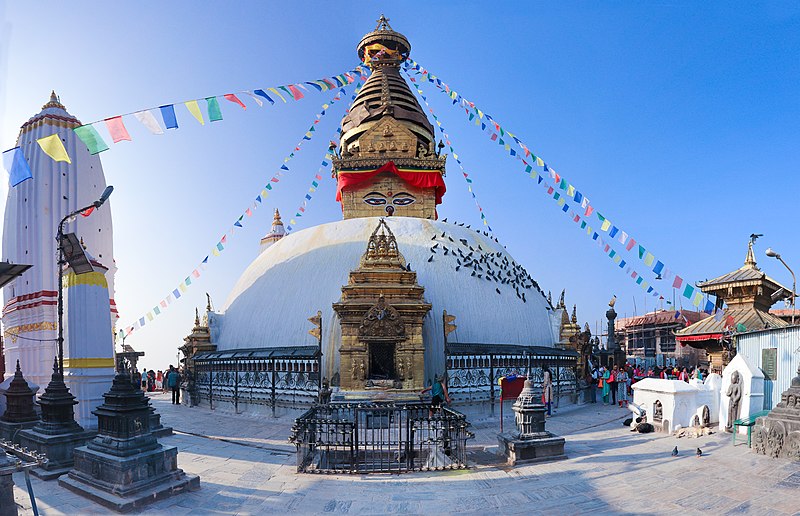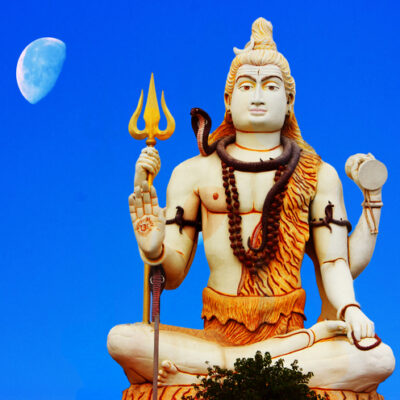Kathmandu Swayambhunath Stupa – Nepal

Address
Kathmandu Swayambhunath Stupa -Kathmandu, Nepal 44600
Deity
Buddha
Introduction
- Location: An ancient religious complex atop a hill in the Kathmandu Valley, west of Kathmandu city.
- Names:
- Tibetan name: Means “Sublime Trees” due to the variety of trees found on the hill.
- Local name (Nepal Bhasa): Shing.kun, meaning “self-sprung.”
- Cultural Significance:
- Central to the mythological history and daily religious practices of the Buddhist Newars.
- Considered one of the most sacred Buddhist pilgrimage sites.
- Complex Features:
- Consists of a stupa, various shrines, temples, a Tibetan monastery, a museum, and a library.
- The stupa has Buddha’s eyes and eyebrows painted on it, with the number one (in Devanagari script) depicted as a nose.
- Access Points:
- A long staircase leading to the main platform from the east.
- A car road around the hill leading to the south-west entrance.
Puranic Significance
- Historical Context:
- One of the oldest religious sites in Nepal, founded by King Vṛsadeva (great-grandfather of King Mānadeva) around the beginning of the 5th century CE.
- Confirmed by a damaged stone inscription indicating work ordered by King Vrsadeva in 640 CE.
- Emperor Ashoka is said to have visited the site.
- Renovation:
- The stupa was completely renovated in May 2010 and re-gilded with 20 kg of gold.
- Mythological Origin:
- According to the Swayambhu Purana, the valley was once a vast lake from which a lotus grew, giving rise to the name “Self-Created.”
- The eternal self-existent flame (svyaṃbhu) led to the construction of the stupa.
- Monkeys:
- Holy monkeys inhabit the north-west parts of the temple; believed to be transformed from head lice of Manjushri, the bodhisattva of wisdom.
- Manjushri cut a gorge at Chovar to drain the lake, making the valley suitable for human habitation.
Special Features
- Stupa Structure:
- Dome at the base, above which is a cubical structure with Buddha’s eyes painted on all four sides.
- Pentagonal torana above each side with engraved statues.
- Thirteen tiers above the torana, culminating in a small space topped with the Gajur.
- Symbolism:
- The dome represents the entire world; awakening from worldly bonds leads to enlightenment.
- The thirteen pinnacles symbolize the stages of spiritual realization required to achieve enlightenment or Buddhahood.
- Large pairs of eyes represent Wisdom and Compassion.
- Carvings of the Panch Buddhas (five Buddhas) on each side and statues of Buddhas at the base of the stupa.
- Nickname: Known as the “Monkey Temple” due to the large population of monkeys that inhabit the area, particularly active after pilgrims and priests leave.
Century/Period/Age
5th century CE.
Nearest Bus Station
Kathmandu
Nearest Railway Station
Raxaul and Gorakhpur.
Nearest Airport
Tribhuvan International airport









